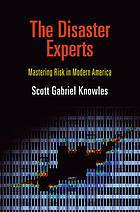Scott Gabrielle Knowles. 2013. Disaster Experts Mastering Risk in Modern America.  University of Pennsylvania Press.
University of Pennsylvania Press.
Scott Knowles details the rise of disaster experts—a group of professionals that include insurance inspectors, scientists, civil defense planners, public officials, and social science researchers—in America from the 1860s until the present in three periods: the “Conflagration Era (1860s-1940s),” the “Civil Defense Era” (1940s-1980s), and the “All-Hazards Era” (1960s-present).
In the first section of the book, Knowles writes about the rise of fire safety experts and the socioeconomic conditions of their rise. In the first three chapters, Knowles narrates the role of fire insurance companies in cultivating fire safety experts, the investigations on Iroquois Theatre Fire (1903), and the works carried out in Underwriter Laboratories.
The threat of a nuclear war and its appropriate response in the wake of such war gave rise to a new kind of disaster experts. In chapters four and five Knowles describes the experts that made up the Civil Defense planners, and the hypothetical atomic bomb tests carried out to study the contingency plans drawn up by them. Cold War geopolitical concerns also led the establishment of two new disaster research organizations and the rise of disaster experts from various fields who conducted studies of communities facing and dealing with disasters.
During the last era, a new type of disaster expertise arose, one that uses the “all hazards” approach to studying and preventing disasters. One key principle of this approach is disasters are the co-creation of human and natural systems.
This book would be an excellent text for an undergraduate course. Discussion of the book would go well with the interactive online Nukemap http://nuclearsecrecy.com/nukemap/ and at least two disaster stories (“The Tringle Fire” and “The Sky is Falling”) from Lamar Underwood’s The Greatest Disaster Stories Ever Told (2002).
Anto Mohsin, Liberal Arts Department, Northwestern University in Qatar
![[Teach311 + COVID-19] Collective](https://blogs.ntu.edu.sg/teach311/files/2020/04/Banner.jpg)